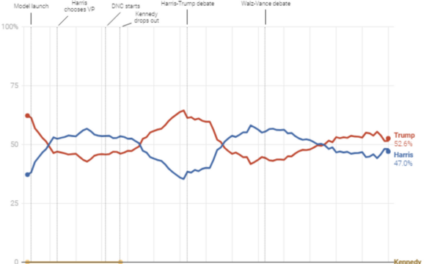We support our Publishers and Content Creators. You can view this story on their website by CLICKING HERE.

A showdown is coming on the conflict between the Biden administration, which is determined to negate federal immigration law, and the State of Texas, which bears the brunt of Biden’s open border policy and is determined to vindicate our immigration laws and protect its own citizens. The case is pending in the Fifth Circuit, but a shot across the bow was fired yesterday in the Supreme Court.
This is the procedural status: A federal judge in Texas held that Texas’s law, SB 4, unconstitutionally conflicts with federal law, and he enjoined enforcement of SB 4. Texas appealed to the Fifth Circuit Court of Appeals, which entered an “administrative stay” of the trial court’s order enjoining Texas. Under that temporary stay, Texas can continue enforcing its law, for the time being, while the case is being argued.
The Biden administration went to the Supreme Court, asking for an emergency order vacating the Fifth Circuit’s administrative stay, i.e., barring Texas from enforcing its law. Yesterday, the Supreme Court, evidently on a 6-3 vote, denied Biden’s emergency application. So, at least for the moment, Texas’s border efforts will continue.
The three left-wing justices, Sotomayor, Kagan and Jackson, issued a lengthy dissent from the Court’s denial of the application to vacate the stay. They leaped immediately into the ultimate merits of the case, asserting the federal government’s right to allow federal law to be flaunted. Their opinion begins:
Today, the Court invites further chaos and crisis in immigration enforcement. Texas passed a law that directly regulates the entry and removal of noncitizens and explicitly instructs its state courts to disregard any ongoing federal immigration proceedings. That law upends the federal-state balance of power that has existed for over a century, in which the National Government has had exclusive authority over entry and removal of noncitizens.
The Court’s majority did not issue an opinion–not unusual on this kind of procedural issue–but Justice Barrett, joined by Justice Kavanaugh, wrote a concurring opinion that explains the Court’s rationale. Barrett says the Court is dealing merely with an administrative stay, not the same thing as a stay pending appeal, and thus little attention should be paid:
So far as I know, this Court has never reviewed the decision of a court of appeals to enter—or not enter—an administrative stay. I would not get into the business. When entered, an administrative stay is supposed to be a short-lived prelude to the main event: a ruling on the motion for a stay pending appeal. I think it unwise to invite emergency litigation in this Court about whether a court of appeals abused its discretion at this preliminary step—for example, by misjudging whether an administrative stay is the best way to minimize harm while the court deliberates.
The real problem—and the one lurking in this case—is the risk that a court will avoid Nken for too long. An administrative stay should last no longer than necessary to make an intelligent decision on the motion for a stay pending appeal. Once the court is equipped to rule, its obligation to apply the Nken factors is triggered—a point that some judges have pressed their Circuits to consider.
***
The time may come, in this case or another, when this Court is forced to conclude that an administrative stay has effectively become a stay pending appeal and review it accordingly. But at this juncture in this case, that conclusion would be premature. The applicants’ opposition to the administrative stay included a request that any such stay itself be stayed for seven days pending an application to this Court, and the Fifth Circuit granted that request in its order. It is surprising that both the parties and the panel contemplated from the start that this Court might review an administrative stay. Before this Court intervenes on the emergency docket, the Fifth Circuit should be the first mover: It should apply the Nken factors and decide the motion for a stay pending appeal. It can presumably do so promptly.
So: the Court’s liberal wing has clearly signaled that it will vote to hold Texas’s law unconstitutional, so that Biden’s erasure of the border can continue unimpeded. No surprise there. But the remainder of the Court, its moderate and conservative wings, has not tipped its hand. I think the case is too close to call, and the Court’s majority evidently wants the normal process to play out, with the case being fully argued and heard in the Fifth Circuit. Whether enforcement of SB 4 will continue in the meantime remains to be determined. The Fifth Circuit could issue an order on the motion for a stay pending appeal at any time.
The Court’s order and opinions are here. Jess Bravin and Elizabeth Findell write about the administration’s emergency motion and the overall progress of the case at the Wall Street Journal, here.
UPDATE: A panel of the Fifth Circuit ruled late last night, 2-1, that Texas’s enforcement of its law should be stayed for the time being. This is one more step in the process, and the Fifth Circuit is hearing arguments on the motion for a stay pending appeal this morning. So this issue could continue to go back and forth, and it may be back in the Supreme Court before long.
Which returns us to the point that the chief significance of yesterday’s Supreme Court order is that the liberal wing has come out strongly on the merits of the case, while the six-justice majority is staying quiet on the merits, for the time being.

 Conservative
Conservative  Search
Search Trending
Trending Current News
Current News 





